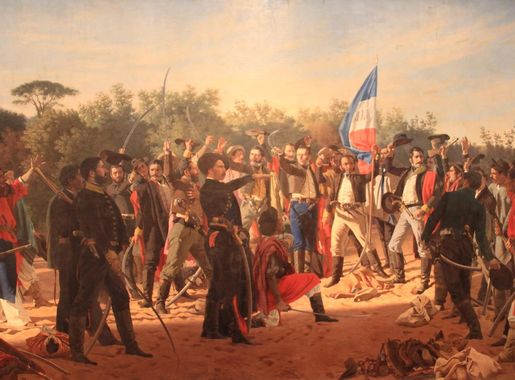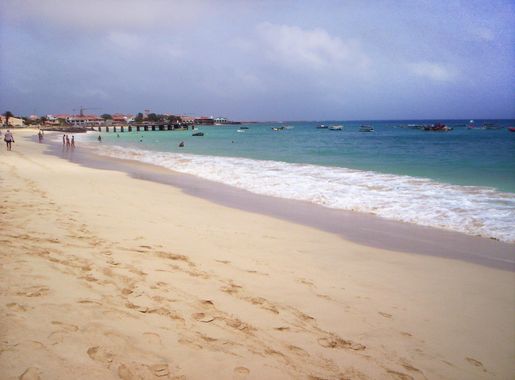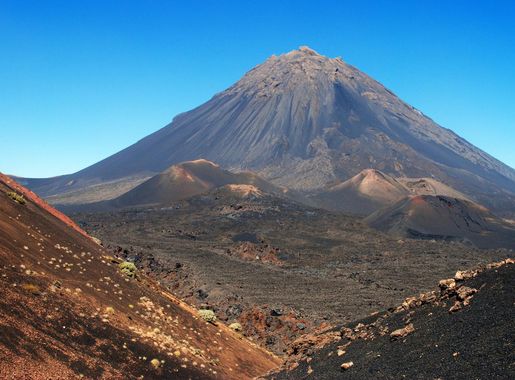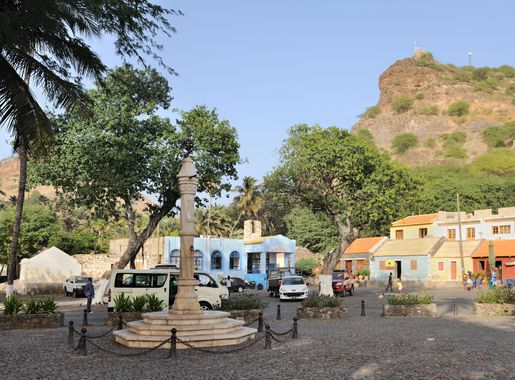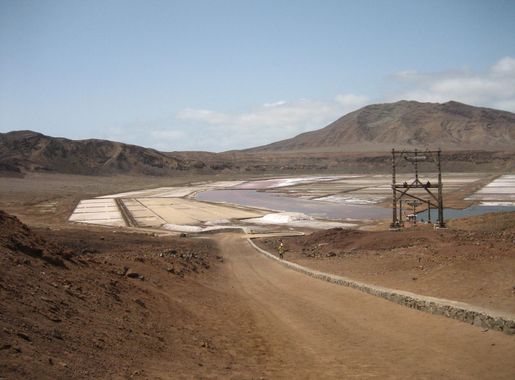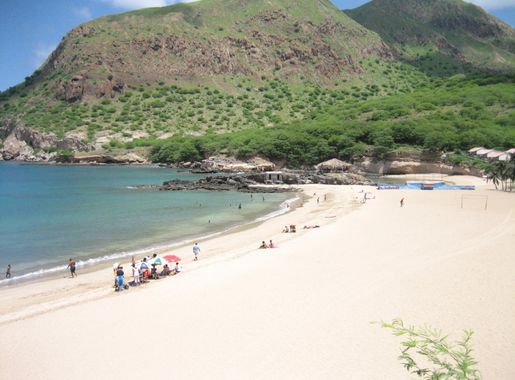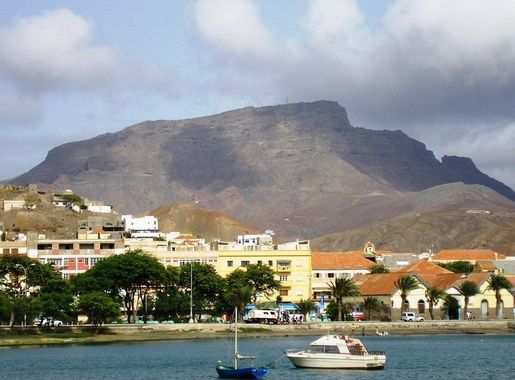
Praia de Carlota: Cabo Verde's Hidden Gem
Discover Praia de Carlota in Cabo Verde, where golden sands meet turquoise waters, offering a perfect blend of relaxation and adventure in a picturesque setting.
Praia de Carlota, located in the stunning archipelago of Cabo Verde, is a beach lover's paradise. With its pristine golden sands and clear turquoise waters, this beach offers a serene escape from the hustle and bustle of daily life. The gentle waves make it a perfect spot for swimming and snorkeling, allowing visitors to explore the vibrant marine life just beneath the surface. The beach is surrounded by lush greenery and dramatic cliffs, providing a picturesque backdrop for your seaside adventures. Whether you're looking to sunbathe, take a leisurely stroll along the shore, or enjoy a picnic with loved ones, Praia de Carlota offers a tranquil setting for all your beach activities. As the sun sets, the beach transforms into a romantic haven, with the sky painted in hues of orange and pink. It's an ideal spot for couples seeking a magical evening by the sea. The nearby town offers charming cafes and restaurants where you can savor local Cabo Verdean cuisine, adding to the overall experience of your visit to this beautiful destination.
Local tips in Praia de Carlota
- Visit early in the morning to avoid crowds and enjoy the beach in peace.
- Bring snorkeling gear to explore the underwater world rich in marine life.
- Pack a picnic and plenty of water, as there are limited facilities on the beach.
- Wear comfortable shoes if you plan to explore the surrounding cliffs and trails.
- Stay for the sunset for a breathtaking and romantic experience.
Praia de Carlota: Cabo Verde's Hidden Gem
Praia de Carlota, located in the stunning archipelago of Cabo Verde, is a beach lover's paradise. With its pristine golden sands and clear turquoise waters, this beach offers a serene escape from the hustle and bustle of daily life. The gentle waves make it a perfect spot for swimming and snorkeling, allowing visitors to explore the vibrant marine life just beneath the surface. The beach is surrounded by lush greenery and dramatic cliffs, providing a picturesque backdrop for your seaside adventures. Whether you're looking to sunbathe, take a leisurely stroll along the shore, or enjoy a picnic with loved ones, Praia de Carlota offers a tranquil setting for all your beach activities. As the sun sets, the beach transforms into a romantic haven, with the sky painted in hues of orange and pink. It's an ideal spot for couples seeking a magical evening by the sea. The nearby town offers charming cafes and restaurants where you can savor local Cabo Verdean cuisine, adding to the overall experience of your visit to this beautiful destination.
When is the best time to go to Praia de Carlota?
Iconic landmarks you can’t miss
The Pier of Santa Maria
Experience the beauty and culture at the Pier of Santa Maria, a vibrant hub offering stunning ocean views and local crafts in Cape Verde.
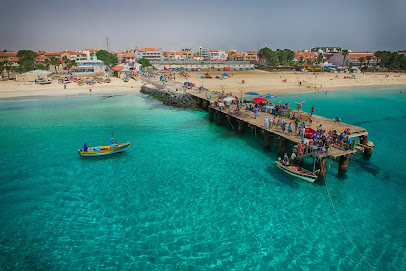
Hotel RIU Karamboa
Experience luxury and relaxation at Hotel RIU Karamboa, a stunning wellness hotel in Boa Vista, Cape Verde, perfect for families and couples.

Buracona - Blue Eye Cave
Experience the stunning natural beauty of Buracona - Blue Eye Cave, a must-visit gem in Cape Verde with crystal-clear waters and breathtaking scenery.
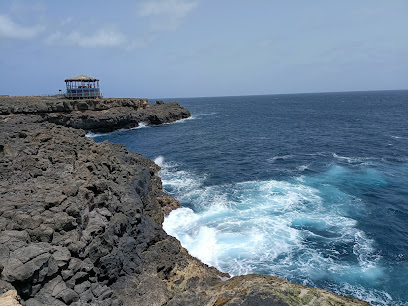
Hotel Riu Cabo Verde
Discover the luxury of Hotel Riu Cabo Verde, where stunning beaches and wellness offerings create the perfect getaway on the island of Sal.
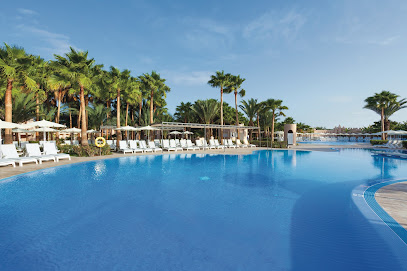
Salinas de Pedra de Lume
Explore the mesmerizing volcanic salt flats of Salinas de Pedra de Lume in Cape Verde, a unique natural wonder and a glimpse into the island's rich history.
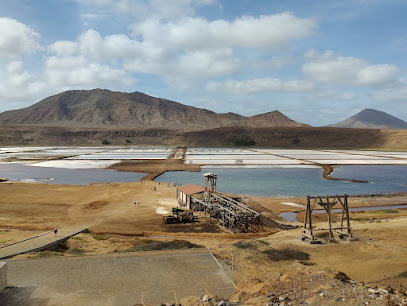
Pachamama Eco Park - Viveiro Botanical Garden
Explore the beauty of Pachamama Eco Park, a serene botanical garden in Cape Verde, offering lush landscapes, diverse flora, and a peaceful retreat.
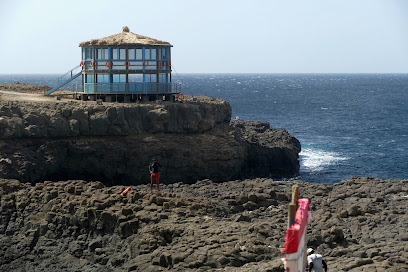
TUI BLUE Cabo Verde - Adults Only
Experience the ultimate adults-only retreat at TUI BLUE Cabo Verde, where luxury meets tranquility on the beautiful shores of Santa Maria.

Morabeza Beach Bar & Lounge Restaurant
Discover the beauty of Cape Verde at Morabeza Beach Bar & Lounge, where exquisite dining meets breathtaking ocean views.
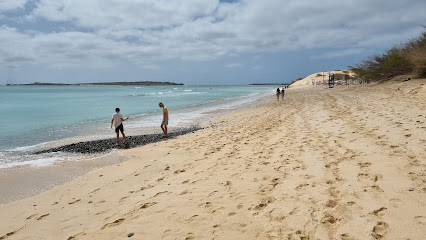
Perola D'Chaves
Experience the flavors of Cape Verde at Perola D'Chaves, a charming beachfront restaurant in Rabil, perfect for seafood lovers and culinary adventurers.
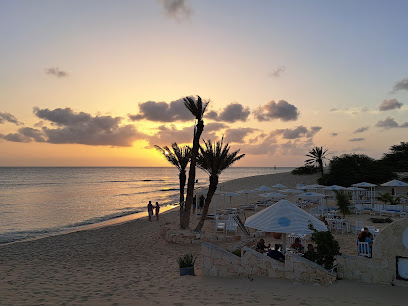
Praia da Atalanta
Experience the stunning beauty and tranquility of Praia da Atalanta, a pristine beach in Cape Verde perfect for relaxation and adventure.
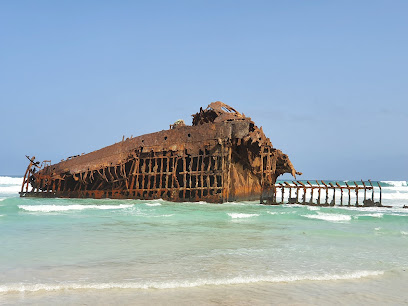
Bahia, The Beach
Discover Bahia, The Beach in Sal Rei: Enjoy fresh seafood and traditional Cape Verdean cuisine with stunning ocean views in a relaxed atmosphere.

Tortuga Beach Resort
Experience the flavors of Cape Verde at Tortuga Beach Resort, where fresh seafood meets stunning coastal views in Sal Rei.
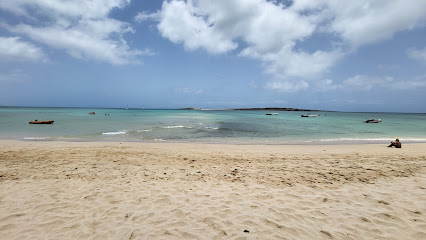
Zipline Cabo Verde
Experience the rush of Zipline Cabo Verde, where adventure meets stunning landscapes in Santa Maria's tropical paradise.

PROJETO BIODIVERSIDADE
Discover the significance of biodiversity at Projeto Biodiversidade in Santa Maria, where conservation meets education in the heart of Cape Verde.
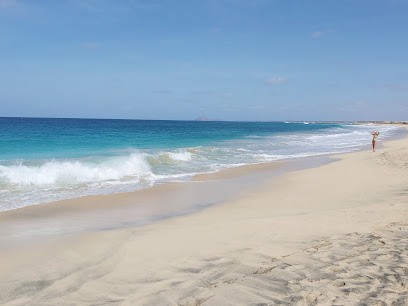
Santa Maria Beach
Experience the serene charm of Santa Maria Beach, a stunning paradise in Cape Verde with golden sands, crystal-clear waters, and vibrant local culture.

Unmissable attractions to see
Mercado Municipal
Explore the Mercado Municipal in Santa Maria, where vibrant local culture meets fresh produce and unique crafts of Cape Verde.
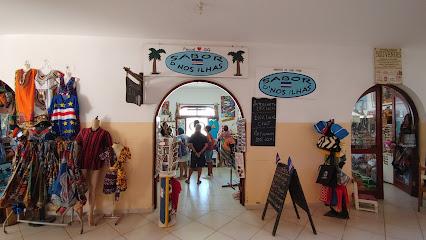
Museu Dos Naufragos
Discover the maritime secrets of Cape Verde at Museu Dos Naufragos in Sal Rei, where shipwreck stories come to life through engaging exhibits.
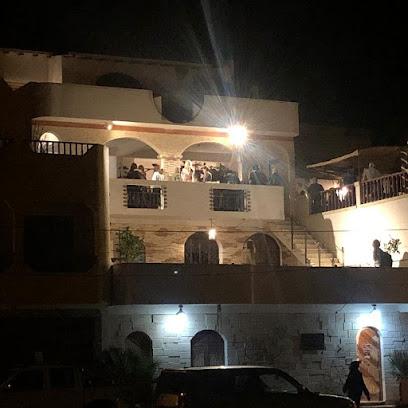
Praia Carlota
Discover the serene beauty of Praia Carlota in Cape Verde, a hidden beach paradise with soft white sands and tranquil waters, perfect for relaxation.
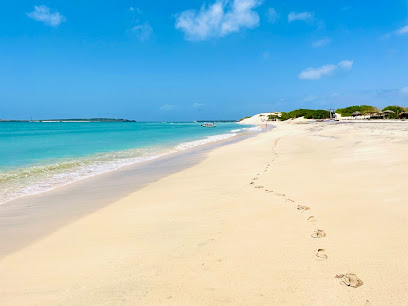
Morabeza Lobby Bar
Discover the charm of Morabeza Lobby Bar in Rabil, where relaxation meets vibrant nightlife against the stunning backdrop of Praia de Boca Salina.
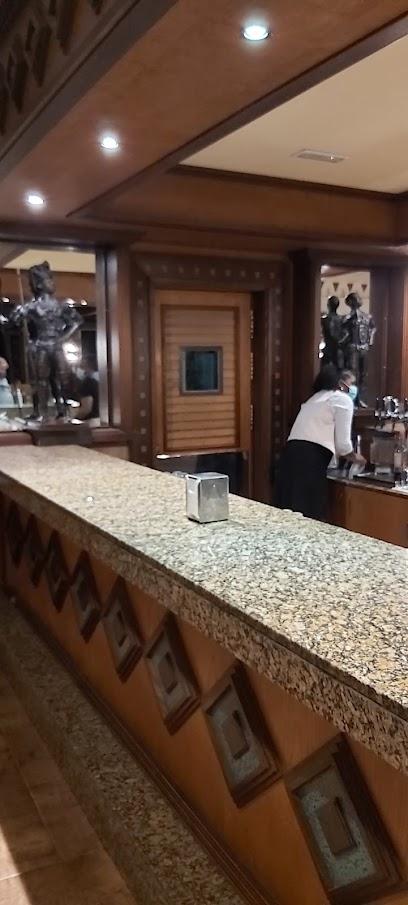
Essential places to dine
Ocean Cafe
Discover Ocean Cafe in Santa Maria – where delicious pizzas meet lively pub vibes in beautiful Cabo Verde.
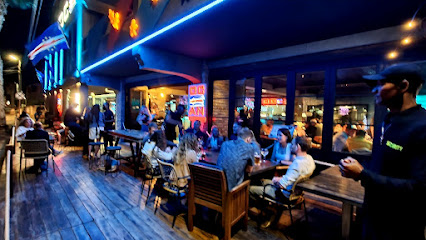
Quintal da Música
Experience the fusion of Cape Verdean cuisine and live music at Quintal da Música in Praia for an unforgettable night out.
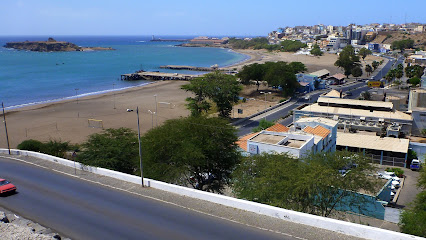
Odjo d'Agua
Experience Cape Verdean hospitality at Odjo d'Agua in Santa Maria - where delicious seafood meets stunning ocean views.
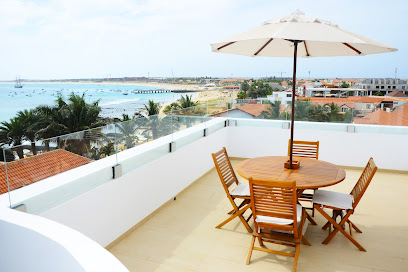
Ponta Preta
Experience authentic Cape Verdean cuisine at Ponta Preta in Santa Maria - where every meal is a delightful journey through local flavors.
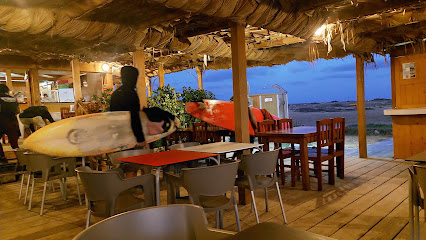
Café Criolo
Discover authentic Cape Verdean flavors at Café Criolo in Santa Maria – where every meal tells a story.
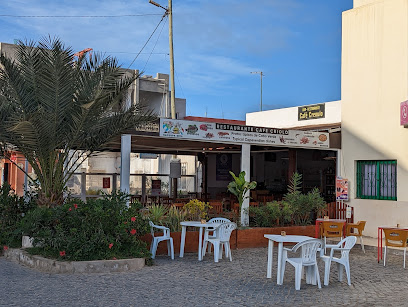
Restaurante Terrazza Italia
Experience authentic Italian cuisine at Restaurante Terrazza Italia in Praia – where every dish tells a story.
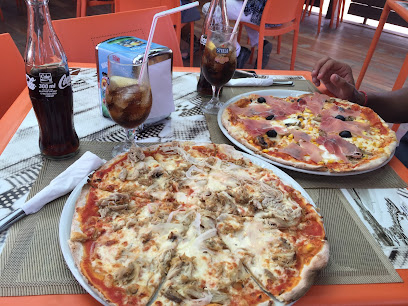
O Poeta Lounge & Food
Discover the authentic flavors of Cape Verde at O Poeta Lounge & Food in Praia – where every meal tells a story.
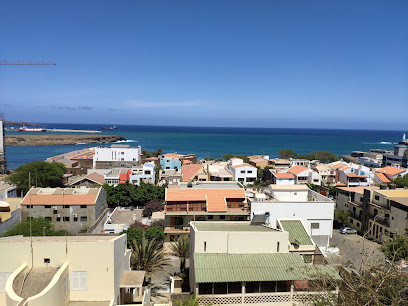
Barracuda
Experience authentic Cape Verdean flavors at Barracuda in Santa Maria – where fresh seafood meets warm hospitality.
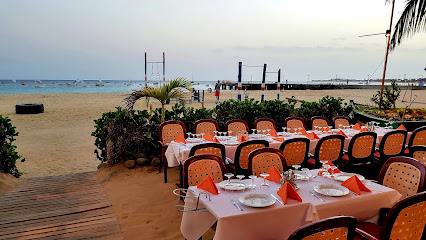
Restaurante Nice Kriola
Experience authentic Cape Verdean cuisine with stunning ocean views at Restaurante Nice Kriola in Praia.
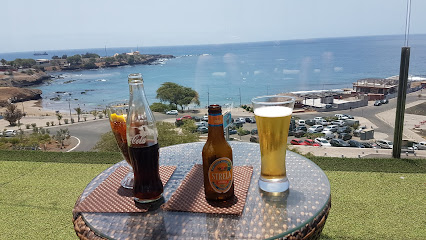
The Bounty Beach Restaurant
Experience the best of Cape Verdean cuisine with oceanfront dining at The Bounty Beach Restaurant in Santa Maria.
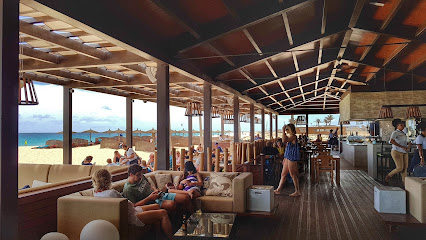
Restaurante As Campanas
Discover authentic Cape Verdean cuisine at Restaurante As Campanas in Praia—where every meal tells a story.
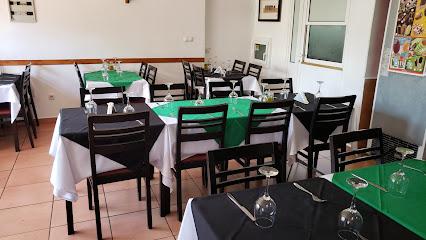
Bistro Noventa 90
Discover the vibrant flavors of Cape Verde at Bistro Noventa 90 – where local ingredients meet culinary artistry in Praia.
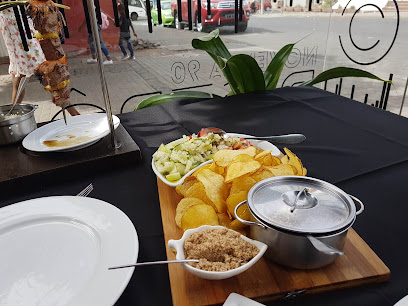
Americos Restaurante
Experience authentic Cape Verdean cuisine at Americos Restaurante in Santa Maria – where every dish tells a story.
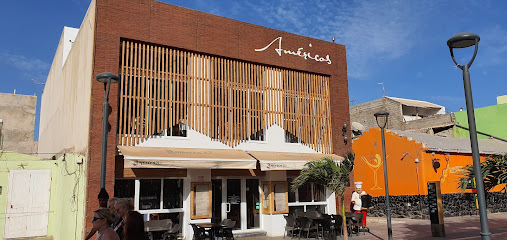
Restaurante Kaza Katxupa
Experience authentic Cape Verdean cuisine at Restaurante Kaza Katxupa in Praia – a culinary treasure offering local flavors in a welcoming atmosphere.
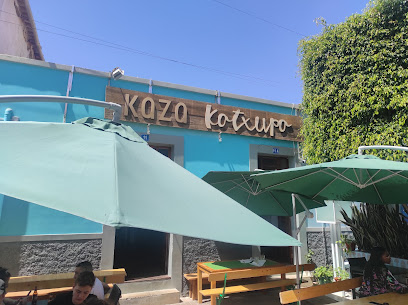
Bar Secreto Iberico
Experience the vibrant culinary scene at Bar Secreto Iberico in Praia, Cape Verde—where local flavors meet exceptional gastropub delights.

Markets, malls and hidden boutiques
Buracona - Blue Eye Cave
Experience the stunning Blue Eye Cave at Buracona, a natural marvel with vibrant blue waters and captivating coastal beauty in Cape Verde.
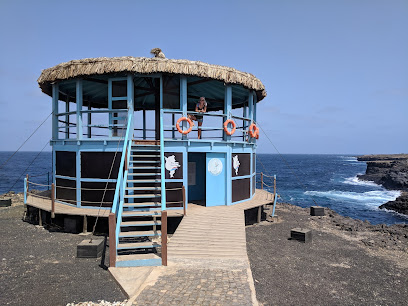
Morabeza Beach Bar & Lounge Restaurant
Experience the best of Cape Verdean cuisine at Morabeza Beach Bar & Lounge, where ocean views and delectable dishes meet.
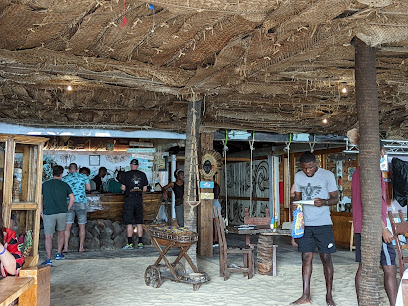
Praia Shopping
Experience shopping, dining, and local culture at Praia Shopping Mall, the vibrant heart of Praia, Cape Verde.

Perola D'Chaves
Experience the authentic flavors of Cape Verde at Perola D'Chaves, a top restaurant in Rabil offering fresh seafood and local specialties.
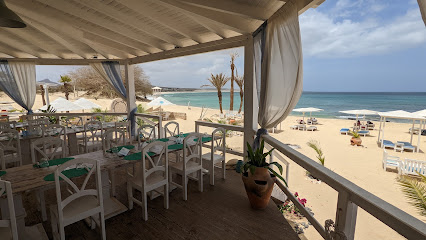
Praia da Atalanta
Experience the stunning shores and vibrant atmosphere of Praia da Atalanta, a must-visit beach destination in Cape Verde.
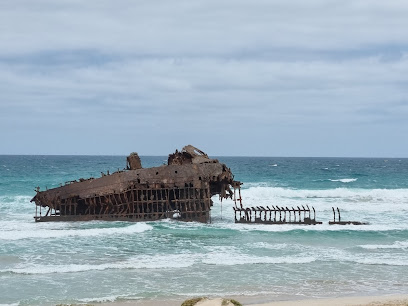
Marché Municipal
Experience the vibrant culture and local flavors at Marché Municipal in Santa Maria, a must-visit market for every traveler in Cape Verde.
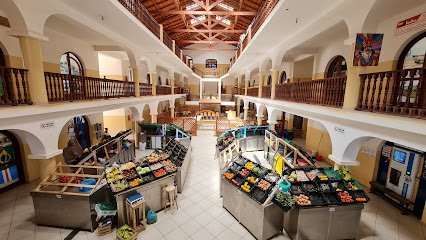
Municipal Market
Discover the colorful and lively Municipal Market in Mindelo, a vibrant hub of local culture, crafts, and culinary delights.
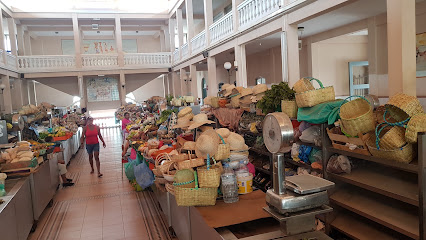
D Concept Design Store
Discover unique flavors and contemporary design at D Concept Design Store, a must-visit restaurant in Praia, Cape Verde.

ORCA CABO VERDE
Explore ORCA CABO VERDE for unique home goods that showcase Cape Verde's rich culture and craftsmanship, perfect for souvenirs or home decor.
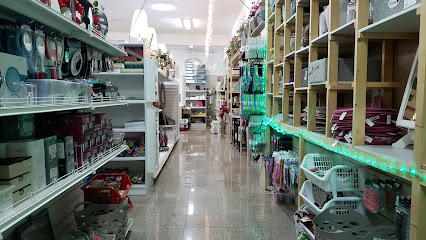
Capvertdesign+Artesanato
Discover Cape Verde's vibrant arts and crafts at Capvertdesign+Artesanato, where local artisans bring creativity to life in unique souvenirs.
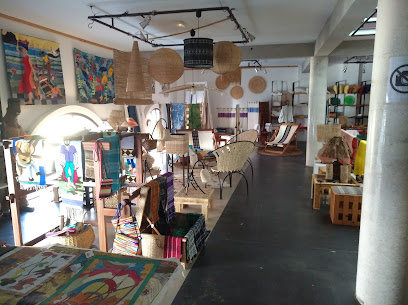
Assomada market
Explore Assomada Market: A vibrant shopping destination in Cape Verde with local produce, artisan crafts, and a taste of authentic culture.
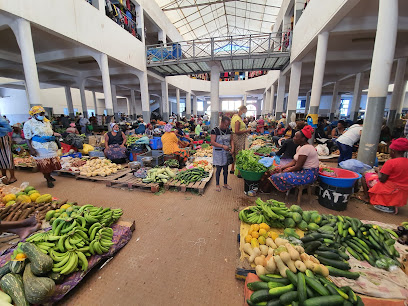
Mercado Municipal
Explore the Mercado Municipal in Sal Rei for an authentic Cape Verdean market experience filled with vibrant culture, local cuisine, and unique crafts.
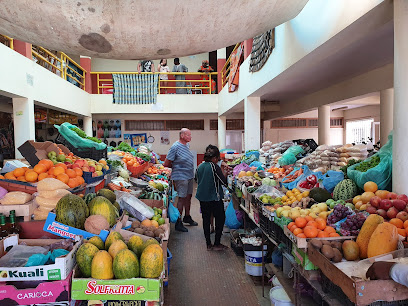
Praia Carlota
Experience the breathtaking beauty and adventure at Praia Carlota, Cape Verde's stunning beach paradise known for kite surfing and relaxation.
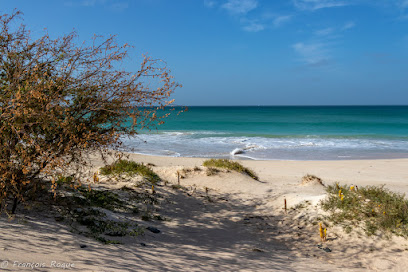
Loja Brasileira
Explore Loja Brasileira in Praia for a vibrant selection of beauty supplies, cosmetics, and health products that cater to every need.
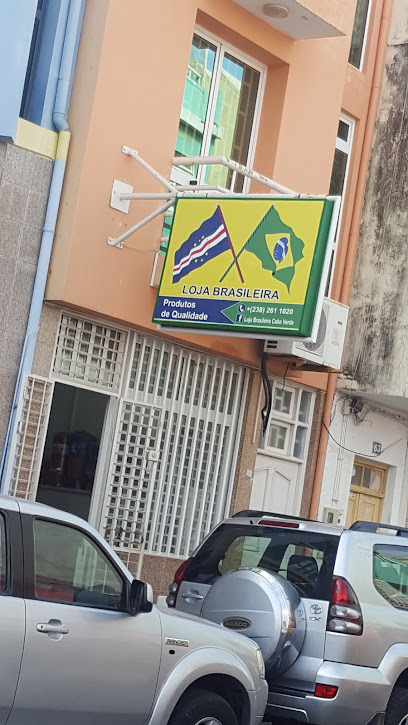
Lucyafrodite Praia Cabo Verde
Experience ultimate relaxation and rejuvenation at Lucyafrodite Praia Cabo Verde, the premier beauty salon in Praia, Cabo Verde.

Essential bars & hidden hideouts
Ocean Cafe
Experience the vibrant flavors of Ocean Cafe in Santa Maria, where delicious pizzas and a lively atmosphere await every visitor.
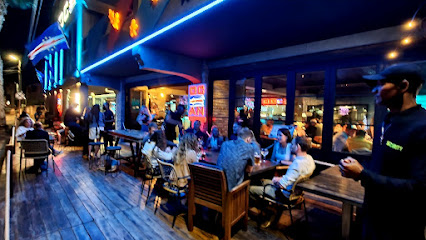
Quintal da Música
Experience the vibrant flavors and sounds of Cape Verde at Quintal da Música, where culinary delights meet live music in a cozy atmosphere.
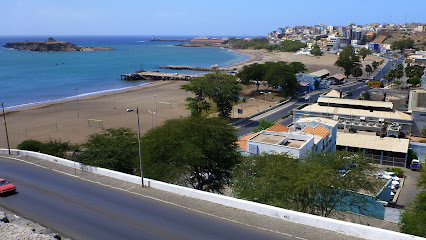
Morabeza Beach Bar & Lounge Restaurant
Experience the vibrant flavors and stunning views of Morabeza Beach Bar & Lounge Restaurant in Cape Verde, where every meal is a celebration.
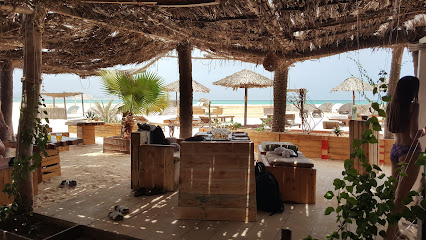
Kebra Cabana
Experience the vibrant nightlife and delectable cuisine at Kebra Cabana, your ultimate destination in Praia, Cape Verde.
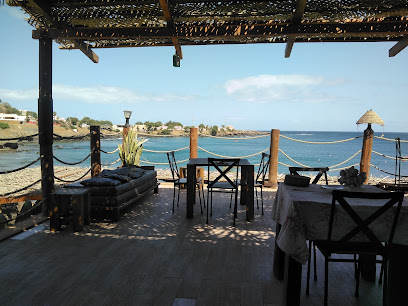
Perola D'Chaves
Discover the rich flavors of Cape Verde at Pérola D'Chaves, a must-visit restaurant in Rabil offering local and international cuisine.

Kalimba Beach Club By Oásis Atlântico
Experience the vibrant atmosphere of Kalimba Beach Club in Mindelo, where sun, sea, and socializing come together for a perfect getaway.
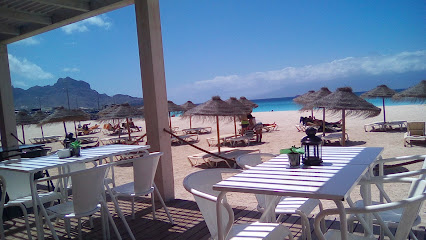
O Poeta Lounge & Food
Discover the vibrant flavors of Cape Verde at O Poeta Lounge & Food, where culinary delight meets stunning views in the heart of Praia.
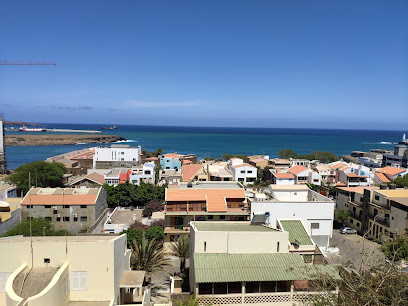
Sal Beach Club
Experience the best of Cape Verdean cuisine and lively beachside ambiance at Sal Beach Club in Santa Maria.
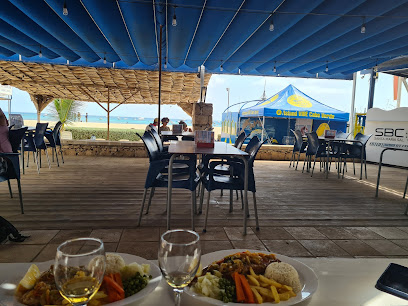
Buddy Bar
Experience the vibrant nightlife at Buddy Bar, Santa Maria's favorite spot for cocktails, live music, and unforgettable memories in Cape Verde.
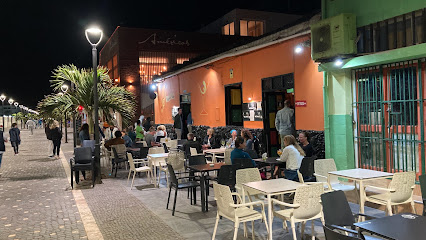
The Dubliner - Irish Bar
Experience the charm of Irish hospitality at The Dubliner, a vibrant bar on Santa Maria Beach, perfect for food and drinks with a view.
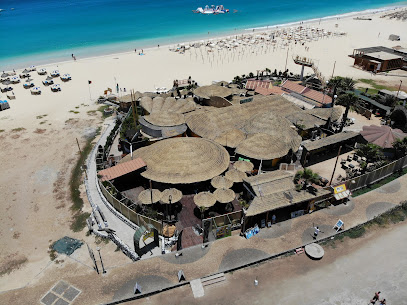
Angulo Beach
Experience the flavors of Cape Verde at Angulo Beach, where exquisite cuisine meets stunning ocean views in Santa Maria.
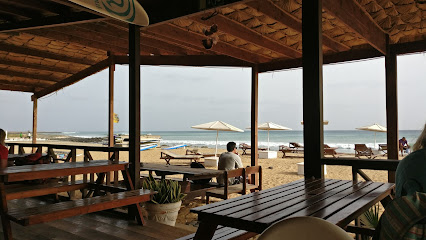
Pub Calema
Discover the heart of Santa Maria's nightlife at Pub Calema, a vibrant bar offering cocktails, local spirits, and an unforgettable atmosphere.
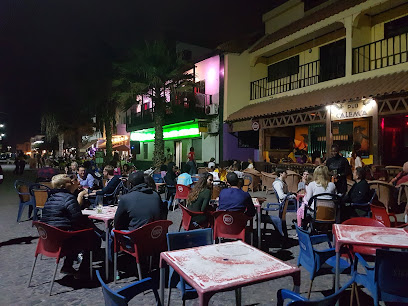
Beach Bar Olá Brasil
Discover Beach Bar Olá Brasil in Santa Maria: a vibrant beachside bar offering refreshing drinks, delicious snacks, and stunning ocean views.
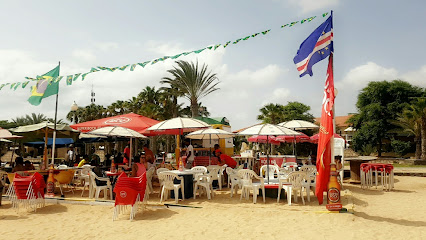
The Britannia @Bailey's Bar
Discover the lively atmosphere, delicious cuisine, and refreshing drinks at The Britannia @Bailey's Bar in Santa Maria, a must-visit for every traveler.
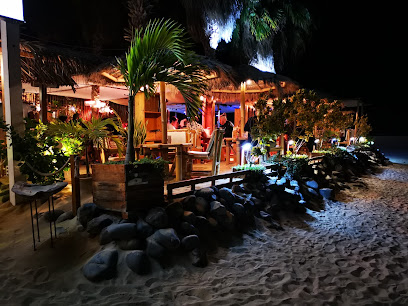
Chill Out Bar
Discover Chill Out Bar in Santa Maria: indulge in refreshing drinks and a relaxed atmosphere, perfect for unwinding after a day of adventure.

Local Phrases about Praia de Carlota
-
- HelloOlá
[oh-lah] - GoodbyeAdeus
[ah-deh-oos] - YesSim
[seem] - NoNão
[now] - Please/You're welcomePor favor
[por fah-vor] - Thank youObrigado
[oh-bree-gah-doo] - Excuse me/SorryCom licença/Desculpa
[kohm lee-sehn-sah/dehs-kool-pah] - How are you?Como está?
[koh-moh ehs-tah] - Fine. And you?Estou bem. E você?
[ehs-tohoh behn/eh voh-seh] - Do you speak English?Fala inglês?
[fah-lah een-glehs] - I don't understandNão entendo
[now ehn-tehn-doo]
- HelloOlá
-
- I'd like to see the menu, pleaseGostaria de ver o menu, por favor
[goh-stah-ree-ah deh vehr oo meh-noo/por fah-vor] - I don't eat meatNão como carne
[now koh-moh kahr-neh] - Cheers!Saúde!
[sow-deh] - I would like to pay, pleaseGostaria de pagar, por favor
[goh-stah-ree-ah deh pah-gahr/por fah-vor]
- I'd like to see the menu, pleaseGostaria de ver o menu, por favor
-
- Help!Ajuda!
[ah-zhoo-dah] - Go away!Vai embora!
[vah-ee ehm-boh-rah] - Call the Police!Chama a polícia!
[shah-mah ah poh-lee-see-ah] - Call a doctor!Chama um médico!
[shah-mah oon meh-dee-koo] - I'm lostEstou perdido/a
[ehs-tohoh pehr-dee-doo/dah] - I'm illEstou doente
[ehs-tohoh doo-ehn-teh]
- Help!Ajuda!
-
- I'd like to buy...Gostaria de comprar...
[goh-stah-ree-ah deh kohm-prahr] - I'm just lookingEstou só a olhar
[ehs-tohoh soh ah oh-lahr] - How much is it?Quanto custa?
[kwahn-toh koosh-tah] - That's too expensiveIsso é muito caro
[ee-soo eh moo-ee-toh kahr-oo] - Can you lower the price?Pode baixar o preço?
[poh-deh bahy-shahr oo preh-soo]
- I'd like to buy...Gostaria de comprar...
-
- What time is it?Que horas são?
[keh oh-rahsh sow-eh] - It's one o'clockÉ uma hora
[eh oon-ah oh-rah] - Half past (10)Meia hora (10)
[meh-ee-ah oh-rah (dehs)] - MorningManhã
[mah-nyah] - AfternoonTarde
[tahr-deh] - EveningNoite
[noh-ee-teh] - YesterdayOntem
[ohn-tehm] - TodayHoje
[oh-zhay] - TomorrowAmanhã
[ah-mah-nyah] - 1Um
[oom] - 2Dois
[doh-ees] - 3Três
[trehs] - 4Quatro
[kwah-troh] - 5Cinco
[seen-koh] - 6Seis
[saysh] - 7Sete
[seh-teh] - 8Oito
[oy-toh] - 9Nove
[noh-veh] - 10Dez
[dehsh]
- What time is it?Que horas são?
-
- Where's a/the...?Onde está o/a...?
[ohn-deh ehs-tah oh/ah] - What's the address?Qual é o endereço?
[kwahl eh oh ehn-deh-reh-soo] - Can you show me (on the map)?Pode mostrar-me (no mapa)?
[poh-deh moh-strahr-meh/noo mah-pah] - When's the next (bus)?Quando é o próximo (autocarro)?
[kwahn-doo eh oh proh-see-moh/ow-toh-kah-roo] - A ticket (to ....)Um bilhete (para ....)
[oom bee-lyeh-teh/pah-rah]
- Where's a/the...?Onde está o/a...?
History of Praia de Carlota
-
Praia de Carlota, located on the island of Santiago in Cabo Verde, was discovered by Portuguese navigators in the 15th century. This discovery marked the beginning of European interest in the archipelago, which soon became an essential stopover for ships traveling between Europe, Africa, and the Americas.
-
During the 16th and 17th centuries, Praia de Carlota became a significant site in the transatlantic slave trade. Enslaved Africans were brought to the island, where they were held before being transported across the Atlantic. The town's strategic location and its deep harbor made it an ideal point for this grim trade.
-
Praia de Carlota's prosperity also attracted unwanted attention. Throughout the 17th and 18th centuries, the area was frequently targeted by pirates. These attacks led to the construction of several fortifications, some of which can still be seen today, such as the Fort of São Filipe.
-
Under Portuguese rule, Praia de Carlota developed into an important administrative and cultural center. The colonial architecture from this period, such as churches, governmental buildings, and residential houses, reflects the influence of Portuguese styles and stands as a testament to this era.
-
The mid-20th century was a period of political upheaval in Cabo Verde, including Praia de Carlota. The struggle for independence from Portuguese colonial rule saw significant activity in the area, culminating in Cabo Verde's independence in 1975. Monuments and museums in Praia de Carlota commemorate the efforts and sacrifices of those who fought for freedom.
-
Praia de Carlota is known for its vibrant cultural heritage. The town hosts numerous festivals throughout the year, celebrating everything from music and dance to local cuisine. The annual Carnival is a highlight, featuring colorful parades and traditional Morna music, reflecting the rich cultural tapestry of Cabo Verde.
-
In contemporary times, Praia de Carlota has grown into a bustling hub of tourism and commerce. Efforts to preserve its historical sites and promote cultural tourism have made it a popular destination for visitors from around the world. The blend of historical landmarks and modern amenities offers a unique experience for travelers.
Praia de Carlota Essentials
-
Praia de Carlota is located on the island of Santiago in Cabo Verde. The nearest international airport is Nelson Mandela International Airport (RAI) in Praia, the capital city. From the airport, Praia de Carlota is easily accessible by taxi or private transfer, which takes approximately 30 minutes. There are also local buses that connect Praia with Praia de Carlota, offering a more budget-friendly option.
-
Getting around Praia de Carlota is relatively straightforward. Taxis are widely available and are the most convenient mode of transportation for tourists. For a more local experience, you can use the 'aluguers'—shared minivans that operate on fixed routes. If you prefer more independence, car rentals are also available in Praia, but be aware that driving conditions can vary.
-
The official currency in Cabo Verde is the Cape Verdean Escudo (CVE). Credit cards are accepted in most hotels, restaurants, and larger shops, but it's advisable to carry some cash for smaller establishments and markets. ATMs are available in Praia and other larger towns, but they may not be as prevalent in smaller areas like Praia de Carlota.
-
Praia de Carlota is generally a safe destination for tourists. However, it's important to take standard precautions. Avoid walking alone at night, especially in less populated areas. Petty crimes like pickpocketing can occur, so keep an eye on your belongings in crowded places. Praia, the capital, has some neighborhoods with higher crime rates, so it's best to stay vigilant and consult locals or your accommodation for advice on which areas to avoid.
-
In case of emergency, dial 132 for medical emergencies, 131 for fire emergencies, and 130 for police assistance. There are medical facilities and pharmacies in Praia, which is close to Praia de Carlota. It is advisable to have travel insurance that covers medical emergencies. For minor health issues, local pharmacies can provide over-the-counter medications.
-
Fashion: Do dress modestly, especially when visiting religious sites. Avoid overly revealing clothing. Religion: Do respect local customs and traditions. When visiting churches, dress conservatively and show respect. Public Transport: Do be respectful and courteous to fellow passengers. Don't eat or drink on public transport. Greetings: Do greet people with a handshake and a smile. A friendly 'Bom dia' (Good morning) or 'Boa tarde' (Good afternoon) is appreciated. Eating & Drinking: Do try local dishes and accept food offerings graciously. Don't refuse hospitality, as it is considered impolite.
-
To experience Praia de Carlota like a local, visit the local markets where you can buy fresh produce and traditional Cabo Verdean goods. Engage with locals, as they are often friendly and willing to share stories about the area’s history and culture. Don't miss the opportunity to enjoy live music performances, especially the traditional 'morna' and 'coladeira' music. For a unique experience, take a boat tour to explore the surrounding coastal areas and enjoy the stunning marine life.
Trending Landmarks in Praia de Carlota
-
The Pier of Santa Maria
-
Hotel RIU Karamboa
-
Buracona - Blue Eye Cave
-
Hotel Riu Cabo Verde
-
Salinas de Pedra de Lume
-
Pachamama Eco Park - Viveiro Botanical Garden
-
TUI BLUE Cabo Verde - Adults Only
-
Morabeza Beach Bar & Lounge Restaurant
-
Perola D'Chaves
-
Praia da Atalanta
-
Bahia, The Beach
-
Tortuga Beach Resort
-
Zipline Cabo Verde
-
PROJETO BIODIVERSIDADE
-
Santa Maria Beach

